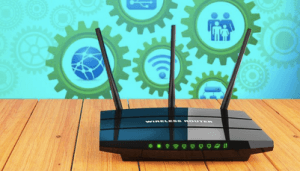
Their findings could revolutionize data centers.
It’s already possible to change a router’s traffic management—it can even be done on your home router with a simple firmware update. But programmable traffic can’t stand up to the immense data transfer needs of a server farm.
“Previously, programmability was achievable, but nobody would use it in production, because it was a factor of 10 or even 100 slower,” MIT professor Hari Balakrishnan explained. So his team came up with a new type of scheduler, the part of a circuit that arranges data packets in the router’s queue and extracts them for forwarding.
Such a scheduler could serve as the foundation for a next-generation network switch that would allow data center managers to change how their network functions each time advances in scheduling technology are made, without having to replace the expensive routers themselves.
Switching to wireless routers from the wired type traditionally used in server farms could also simplify their layouts by removing the need to run miles of cable around a building. That could result in further cost savings.
One hopes those savings would be passed on to you, the Netflix, Dropbox, or other cloud service customer, instead of being used to pad the company’s profits.
